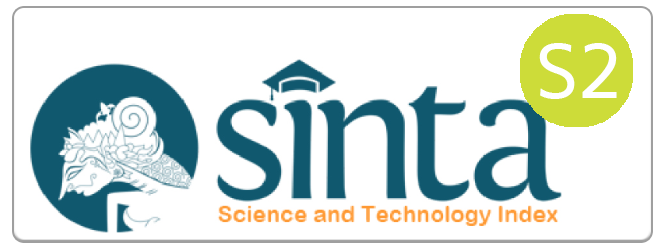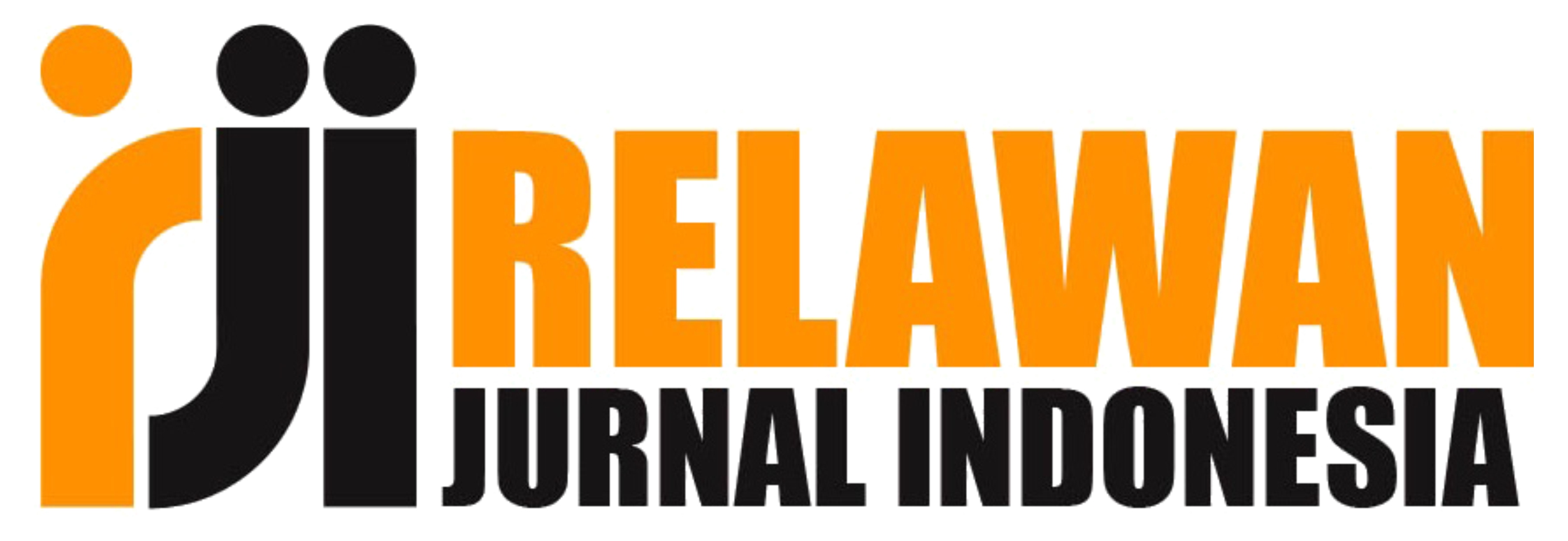Demographic Factors and Employee Performance: The Mediating Effect of Employee Empowerment
Abstract
This study analyzes the influence of age, gender, education, years of service, and number of family dependents on employee empowerment both directly and indirectly through employee performance. The sample was taken from 14 cigar companies in Jember Regency, East java, Indonesia, of which each company is represented by ten samples (respondents) who are randomly selected. The samples consist of 140 people. The study uses path analysis to determine the direct and indirect effects of the variables. The results showed that age, sex, education, years of service, and number of family dependents have a significant positive effect on employee performance and on employee empowerment. Employee performance mediates the effect of age, sex, education, years of service, and number of family dependents on employee empowerment.
Keywords
Full Text:
PDFReferences
Ahiazu, A.I. (1989). The “Theory A” system of work organization for the modern African workplace. International Studies of Management and Organization, 19(1), 6-27. Doi:10.1080/00208825.1989.11656496.
Ahl, H.J. (2002). The making of the female entrepreneur: A discourse analysis of research texts on women’s entrepreneurship. JIBS Dissertation Series 015. Jönköping University.
Al-Kahtani, N.S. (2012). A study of relationship between demographical variables, organizational structure and social interaction with organizational commitment among employees of Saudi Arab, International Journal of Trade and Commerce, 1(1), 11-22.
Badal, S., & Harter, J.K. (2014). Gender diversity, business-unit engagement, and performance, Journal of Leadership & Organizational Studies, 21(4), 354-365.
Baijal, A. (2015). A study on employees empowerment with the demographic variables in the employees of Union Bank of India working for Star Union Da Ichi Life Insurance, International Journal of Science and Research, 4(4), 1431-1436.
Base, A. (2018). Employee empowerment and employee performance: An empirical study on selected banks in UAE. Journal of Applied Management and Investment, 7(2), 71-82.
Bashir, M., Jianqiao, L., Jun, Z., Ghazanfar, F., & Khan, M.M. (2011). The role of demographic factors in the relationship between high performance work system and job satisfaction: A multidimensional approach, International Journal of Business and Social Science, 2(18), 207-218.
Belal, A.K. & Mujtaba, B.G. (2010). Transformational leadership of Afghans and Americans: A study of culture, age and gender. Journal Service Science and Management. 3(1): 150-158. Doi:10.4236/ jssm.2010.31019.
Bem, D.J. & Berkowitz, L. 1993. Self-perception theory. Advances in Experimental Social Psychology. Vol. 6.
Benson, G.S., Finegold, D. & Mohrman, S.A. (2004). You paid for the skills, now keep them: Tuition reimbursement and voluntary turnover. Academy of Management Journal. 47(1): 315-331. Doi:10.2307/20159584.
Borg, W.R. & Gall, M.D. (2003). Educational Research: An Introduction (7th ed.). New York: Longman, Inc.
Bose, I. (2018). Employee empowerment and employee performance: an empirical study on selected banks in UAE, Journal of Applied Management and Investments, 7(2), 71-78.
Brush, C.G. (1992). Research on women business owners: past trends, a new perspective and future directions. Entrepreneurship: Theory and Practice. 16 (4). Doi:10.1177/ 104225879201600401.
Cagle, S.G. (1988). Fiedler’s Contingency Theory of Leadership Effectiveness and Appointment of a Committee Chairperson. Dissertation Abstracts International. 50(07)-B: 2842.
Capanni, C., Sartori, S., Carpentiero, S.G., & Costa, G. (2005). Work ability index in a cohort of railway construction workers. International Congress. Series 1280: 253-257.
Chambers, R. (1995). Rural Development: Putting the Last First. London, New York: Longman.
Chan, Y., Taylor, R., & Markham, S. (2008). The role of subordinates: Trust in a social exchange-driven psychological empowerment. Journal of Managerial Issues. 20(4): 444-467.
Clifford, P. McC. & Gerasmus, A.G. (1997). The relationship between job satisfaction and performance the case of Local Government Finance of in Ohio. Public Productivity and Management Review. 21(2): 170-191. doi: 10.2307/3380882.
Dessler, G. 2003. Human Resource Management. 9th edition. New York: Prentice Hall.
Dickson, K.E. & A. Lorenz. 2009. Psychological empowerment and job satisfaction of temporary and part-time non-standard workers: A preliminary investigation. Institute of Behavioral and Applied Management. 24(1): 166-191.
Dinc, M.S. & Plakalovic, V. (2016). Impact of caring climate, job satisfaction, and affective commit¬ment on employees’ performance in the banking sector of Bosnia and Herzegovina. Eurasian Journal of Business and Economics. 9(18): 1-16. doi:10.17015/ejbe.2016.018.01.
Fauzilah, S. (2012). Demographic Characteristics Differences and Sales Performance among Night Market Traders in Malaysia. International Business Research. 5(4): 25-33. doi:10.5539/ibr.v5n4p25.
Fischer, E.M., Reuber, A.R., & Dyke, L.S. (1993). A theoretical overview and extension of research on sex, gender and entrepreneurship. Journal of Business. 8 (2): 151-168. Doi: 10.1016/0883-9026(93)90017-Y.
Friedman, J. (1992). Empowerment: The Politics of Alternative Development. Cambridge, USA: Blackwell Publishers.
Gawi, E.M.K. (2012). The Effects of Age Factor on Learning English: A Case Study of Learning English in Saudi Schools, Saudi Arabia. English Language Teaching, 5(1), 127-139. doi:10.5539/elt.v5n1p127.
Gede, N.T., & Lawanson, O.A. (2011). Emloyees’ characteristics and job performance of staff of the bayelsa state ministry of education, Proceedings of the 2011 International Conference on Teaching, Learning and Change, International Association for Teaching and Learning (IATEL). Retrived from: www.hrmars.com/ admin/pics/163.pdf.
Gelderblom, A. (2006). In Ageing and employment: Identification of good practice to increase job opportunities and maintain older workers in employment. The relationship of age with productivity and wages, European Commission. pp. 67-84.
Gibson, J.L., Ivancevich, J.M., Donnelly Jr., J.H., &. Konopaske, R. (2009). Organization: Behavior, Structure, Processes, (14th ed.). New York: McGraw-Hill.
Goleman, D. (1995). Emotional Intelli-gence. New York: Bantam.
Hanif, R., Tariq, S., & Nadeem, M. (2011). Personal and job-related predictors of teacher stress and job performance among school teachers, Pakistan Journal of Commerce and Social Sciences, 5(2), 319-329.
Hashemi, S.M., Schuler, S.R., & Riley, A.P. (1996). Rural credit programs and women’s empowerment in Bangladesh, World Development. Elsevier Journal. 24(4): 635-653. Doi:10.1016/0305-750X(95)00159-A.
Heck, R., Rowe, B., & Owen, A. (1995). Home Based Employment and Family Life. Westport. Connecticut: Auburn House.
Holmes, F.F., Holmes, G.E., & Hassanein, R. (1978). Performance of male and female medical students in a medicine clerkship. Journal of the American Medical Association. 239(1), 2259-2262. doi:10.1001/ jama.1978.03280480051020.
Hoogendoorn, S., Oosterbeek, H., & Van Praag, M. (2013). The impact of gender diversity on the performance of business teams: Evidence from a field experiment. Management Science, 59(7), 1514-1528.
Huang, X., Shi, K., Zhang, Z., & Cheung, Y.L. (2006). The impact of participative leadership behavior on psychological empowerment and organizational commitment in Chinese state-owned enterprises: The moderating role of organizational tenure. Asia Pacific Journal Manage. 23(1): 345-357. doi: 10.1007/ s10490-006-9006-3.
Ilmarinen, J. (1999). Ageing Workers in the European Union Status and Promotion of Work Ability. Employability and Employment. Helsinki: Finnish Institute of Occupational Health.
Inmyxai, S., & Takahashi, Y. (2010). The effect of firm resources on business performance of male- and female-headed firms in the case of Lao micro-, small-, and medium-sized enterprises. International Journal of Business and Information. 5(1): 63-90.
Iqbal, N., Ahmad, N., & Javaid, K. (2013). Impact of employee empowerment on employee’s performance in the context of banking sector of Pakistan, Pinnacle Business Management, 1(1), 1-6.
Ivancevich, J. M., Konopaske, R., & Matteson, M. T. (2011). Organi-zational Behavior and Management (6th Ed.). New York, NY: McGraw-Hill Irwin.
Jankingthong, K. & Rurkkhum, S. (2013). Factors affecting employ perfor-mance: A review of literature. Silpakorn University Journal of Social Sciences, Humanities, and Arts. 12(2), 115-127.
Kariuki, L.N., and Wekesa, S. (2018). Influence of human resource development practices on performance of academic staff in technical training institutions in Kenya: A case study of thika technical training institute, International Journal of Scientific and Research Publications, 8(9), 428-433. DOI: 10.29322/ IJSRP.8.9.2018.p8159.
Katozai, M.A. (2005). A Comprehensive Study of Education for Prospective Headmasters and Headmistresses University Publisher. Peshawar: Doger Unique Book.
Kaymakç, K., & Babacan, S. (2014). Employee empowerment in new public management approach and a research, European Journal of Research on Education, 2(Special Issue), 62-70.
Khuong, M.N. & Yen, V.H. (2016). Investigate the effects of job stress on employee job performance: A case study at Dong Xuyen Industrial Zone, Vietnam. International Journal of Trade, Economics and Finance. 7(2), 31-37. doi:10.18178/ ijtef.2016.7.2.495.
Kimmel, M.S. (2000). The Gendered Society. Oxford: Oxford University Press.
Korabik, K., Lero, D.S., & Whitehead, D.L. (2008). Handbook of Work and Family Integration: Research, Theory, and Best Practice. Burlington, MA: Elsevier.
Kotur, B.R., & Anbazhagan, S. (2014). Influence of age and gender on the performance, IOSR Journal of Business and Management, 16(5), 97-103.
Lanzi, D. (2007). Capabilities, human capital, and education. Journal of Socio-Economics. 36(1), 424-435. Doi:10.1016/j.socec.2006.12.005.
Lepak, D.P. & Snell, S.A. (1999). The human resource architecture: Toward a theory of human capital allocation and development. Academy of Management Review. 24(1): 31-48. Doi:10.5465/AMR.1999.1580439.
Marisa, S. & Sonia, A. (2005). Linking organizational resources and work engagement to employee perfor-mance and customer loyalty: The mediation of service Climate. Journal of Applied Psychology. 90(6), 1217-1227. Doi:10.1037/ 0021-9010.90.6.1217.
Meenakshi, S. (2017). The impact of work life balance of faculty members in the private universities: An empirical study, Journal of Advanced Research in Dynamical & Control Systems, 15-Special Issue, 686-696.
Menon, S.T. (2001) Employee empowerment: An integrative psychological approach. Applied Psychology: An International Review, 50(1), 153-180.
Micheli, P. & Neely, A. (2010). Performance measurement in the public sector in England: Searching the golden thread. Public Administration Review. 70(4), 591-600. Doi:10.1111/j.1540-6210. 2010.02180.x.
Moore, D.P. (1999). An examination of present research on the female entrepreneur-suggested research strategies for the 1990s. Journal of Business Ethics. 9(4), 275-281. Doi:10.1007/BF00380327.
Mujtaba, B.G., & Kaifi, B.A. (2008). Afghan and American professional’s leadership orientation toward tasks and relationships: Are there tendencies toward convergence or divergence?, Fortune Journal of International Management. 5(1), 107-125.
Nsubuga, Y.K. (2009). Analysis of leadership styles and school performance of secondary schools in Uganda. Doctoral Thesis. Port Elizabeth-Uganda: Department of Education, Nelson Mandela Metro-politan University.
Orser, B. & Foster, M. (1992). Home Enterprise: Canadians and Home-Based Work. Canada: The Home-Based Business Project Committee.
Osborn, D. & Gabler, T. (1992). Reinverting Government: How the Entrepreneurial Spirit is Trans-forming the Public Sector. Addison-Wesley.
Ozaralli, N. (2003). Effects of transfor-mational leadership on empower¬ment and team effec¬tiveness, Leadership and Organization Develop¬ment Journal. 24(6), 335-344.
Plauché, W.C. & Miller Jr., J.M. (1986). Performances of female medical students in an obstetrics and gynecology clerkship. Journal of Medical Education. 61(1), 323-325.
Pratama, A., Bahtera, H., Anggara, B.Z., & Yolanda, V. (2010). Focus Group Discussion Report on Consumer Purchase Decision of Laptops and Netbooks, Unpublished Working Paper.
Rajalingam, Y., Jauhar, J., & Bashawir, A.G. (2015). A study on the impact of empowerment on employee performance: The mediating role of appraisal, International Journal of Liberal Arts and Social Science, 3(1), 92-104.
Rajasekar, D., Sudheer, A.K., & Reddy, P.R. (2017). A study on employee empowerment in Indian corporate sector, International Journal of Civil Engineering and Technology, 8(11), 268–277.
Ravichandran, M. & Indumathy, J. (2018). Influence of socio-economic and demographic factors on stress perception and attitude towards self and job: A study with reference to women health care professionals, Anthropologist 32(1-3), 16-22.
Rivai, V. 2006. Manajemen Sumber Daya Manusia Untuk Perusahaan dari Teori ke Praktik. Jakarta: PT Raja Grafindo Persada.
Robbins, S.P. & Judge, T.A. (2008). Organization Behavior (15th ed.). Boston: Pearson.
Robbins, S.P. (2006). Organizational Behavior: Concept, Controversies and Application. New Jersey: Prentice Hall.
Roflin, E. (2009). Penggunaan metode trimming pada analisis jalur dalam menentukan model kausal dana alokasi umum kabupaten/kota di Provinsi Sumatera Selatan. Jurnal Penelitian Sains. 9(12), 1-9.
Samad, S., & Yusuf, S.Y.M. (2014). effects of personality traits, organizational factors and demographic variables on employee empowerment, Australian Journal of Basic and Applied Sciences, 8(2), 284-293.
Sankar, R. (2018). A study on employee empowerment, work performance and its allied factors among teaching and non-teaching women staffs in Puducherry. International Journal of Management Studies. 5(1), 21-27. Doi: 10.18843/ijms/v5i1(2)/04
Sankar, R. (2018). Gender, Work Performance and Workers Empowerment: A Statistical Interrogation, International Journal of Management Studies, 5(3), 27-39. Doi: 10.18843/ijms/v5iS3/03
Spreitzer, G.M. (1995). Psychological empowerment in the workplace: Dimensions, measurement, and validation. Academy of Management Journal, 38(5), 1442-1465.
Spreitzer, G.M., Kizilos, M.A., & Nason, S.W. (1997). A dimensional analysis of the relationship between psychological empowerment and effectiveness, satisfaction and strain. Journal of Management, 23(5), 679-704
Srivastava, A.K. (2008). Effect of perceived work environment on employees’ job behaviour and organizational effectiveness. Journal of the Indian Academy of Applied Psychology. 34(1): 47-55.
Sumodiningrat, G. (2002). Pemberdayaan Masyarakat dan Jaring Pengaman Sosial, Jakarta: Gramedia.
Takur, G. (2017). The influence of demographic characteristics on performance of academic employee in Kenyatta University, Proceedings of the Thirteenth Asia-Pacific Conference on Global Business, Economics, Finance and Banking (AP17Singapore Conference). Singa-pore. 3-5, August 2017, pp. 1-16.
Trusty, J. & S.G. Niles. (2004). Realized potential or lost talent: High school variables and bachelor’s degree completion. Career Development Quarterly. 53(1): 2-15. Doi:10.1002/j.2161-0045.2004.tb00651.x.
Tuckman, B.W. (1999). A Tripartite Model of Motivation for Achievement: Attitude, Drive, Strategy. New York: John Wiley & Sons Inc.
Ukil, M.I. (2016). The impact of employee empowerment on employee satisfaction and service quality: Empirical evidence from financial enterprises in Bangladesh, Business: Theory and Practice. 17(2), 178-189.
Van Vugt, M. (2006). Evolutionary origins of leadership and followership. Personality & Social Psychology Review. 10(4): 354-371. Doi:10.1207/s15327957pspr1004_5.
Vinod, H. & S.K. Kaushik. (2007). Human capital and economic growth: Evidence from developing countries. American Economist. 51(1): 29-39. Doi:10.1177/056943450705100103.
Warr, P. (1994). Age and job performance. In J. Snel & R. R. Cremer (eds.), Work and Aging. A European Perspective (pp. 309322). London: Taylor & Francis.
Yilmaz, O.D. (2015). Revisiting the impact of perceived empowerment on job performance: Results from front-line employees, Turizam. 19(1), 34-46.
Zani, B. & Pietrantoni, L. (2001). Gender differences in burnout, empowerment and somatic symptoms among health professionals: Moderators and mediators. Equal Opportunities International. 20(2), 39-48.
DOI: http://dx.doi.org/10.24856/mem.v34i2.962
Article Metrics
Abstract view : 6808 timesPDF - 0 times
Refbacks
- There are currently no refbacks.
Copyright (c) 2019 Media Ekonomi dan Manajemen

This work is licensed under a Creative Commons Attribution 4.0 International License.







